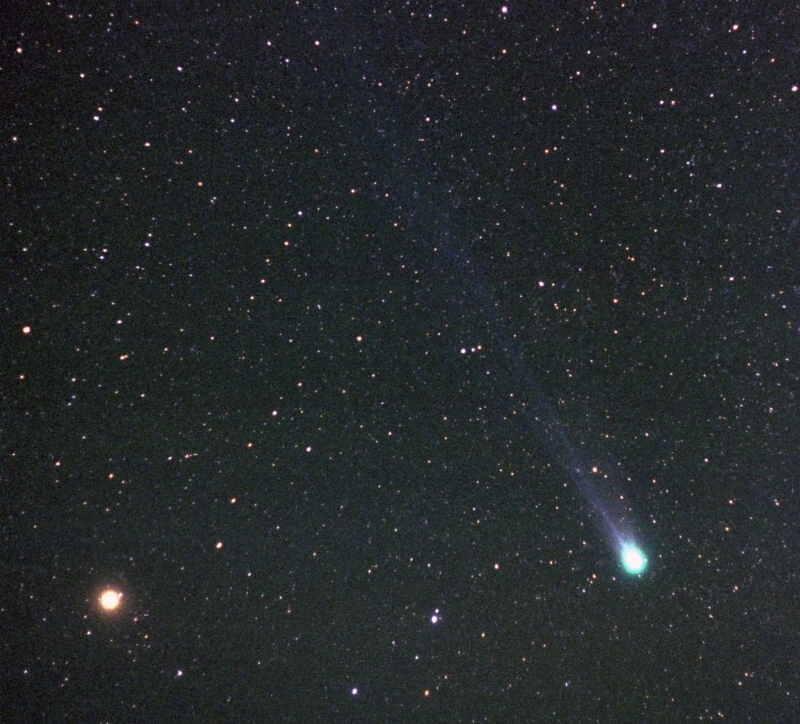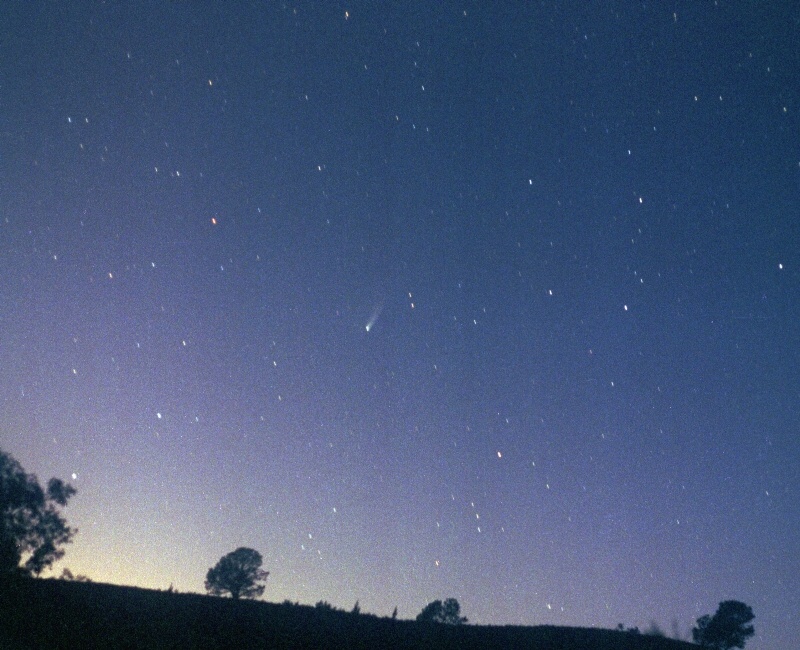
1996 March 18.
A composite of 3x2 minute exposures.
The comet is situated in Libra with the short dust tail pointing towards Mu Virginis.
Note the kink in the blue ion tail, which is seen stretching over 11 degrees in this photo.
The comet then shone at about magnitude 3.0

1996 March 22.
50mm lens, 3 minute exposure and 400 ASA film.
Arcturus is the bright star to the left. The rapid development is evident.
The ion tail stretches well beyond the 17 degrees captured in this photo, and the comets head rivals Arcturus in brightness, about magnitude 0.
This was my last observation of the comet prior to perihelion as it sped rapidly towards the northern horizon over the following days.
Once comet Hyakutake rounded the Sun, it appeared in the morning sky for southern hemisphere observers during late May.

